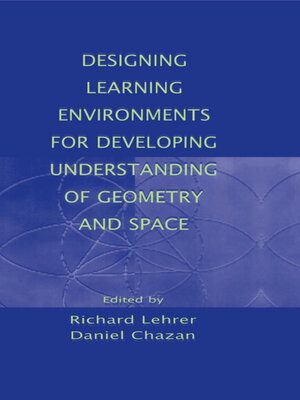Designing Learning Environments for Developing Understanding of Geometry and Space
ebook ∣ Studies in Mathematical Thinking and Learning
By Richard Lehrer

Sign up to save your library
With an OverDrive account, you can save your favorite libraries for at-a-glance information about availability. Find out more about OverDrive accounts.
Find this title in Libby, the library reading app by OverDrive.



Search for a digital library with this title
Title found at these libraries:
| Library Name | Distance |
|---|---|
| Loading... |
This volume reflects an appreciation of the interactive roles of subject matter, teacher, student, and technologies in designing classrooms that promote understanding of geometry and space. Although these elements of geometry education are mutually constituted, the book is organized to highlight, first, the editors' vision of a general geometry education; second, the development of student thinking in everyday and classroom contexts; and third, the role of technologies.
Rather than looking to high school geometry as the locus—and all too often, the apex—of geometric reasoning, the contributors to this volume suggest that reasoning about space can and should be successfully integrated with other forms of mathematics, starting at the elementary level and continuing through high school. Reintegrating spatial reasoning into the mathematical mainstream—indeed, placing it at the core of K-12 mathematics environments that promote learning with understanding—will mean increased attention to problems in modeling, structure, and design and reinvigoration of traditional topics such as measure, dimension, and form. Further, the editors' position is that the teaching of geometry and spatial visualization in school should not be compressed into a characterization of Greek geometry, but should include attention to contributions to the mathematics of space that developed subsequent to those of the Greeks.
This volume is essential reading for those involved in mathematics education at all levels, including university faculty, researchers, and graduate students.







